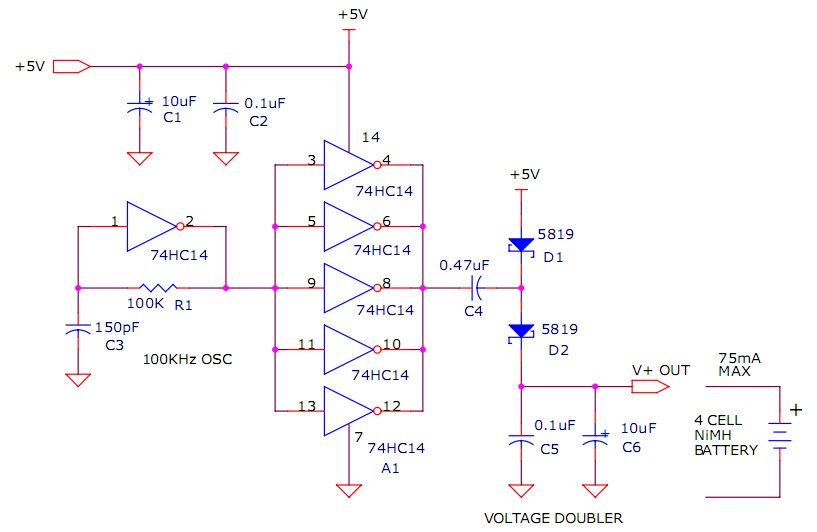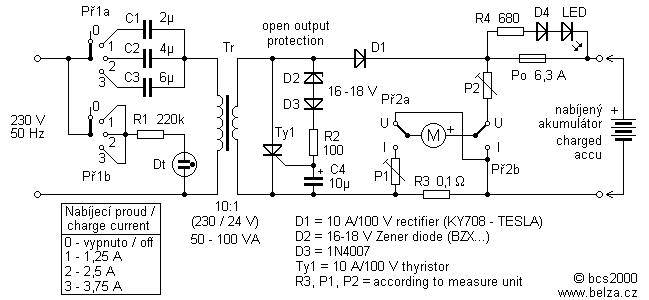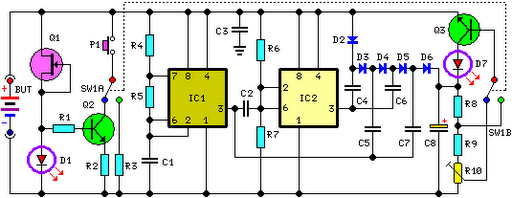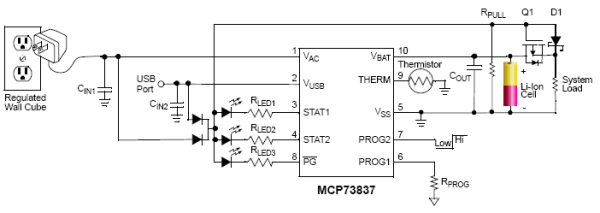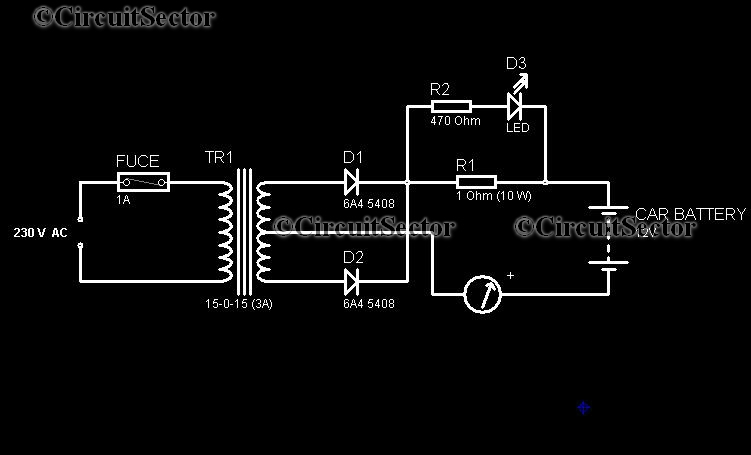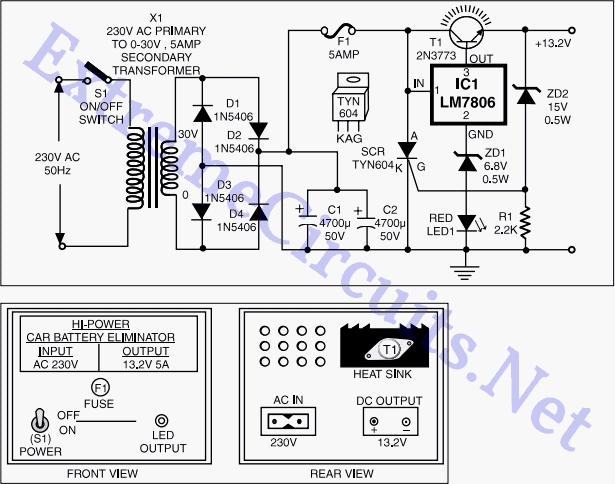
Nicad Battery Tester
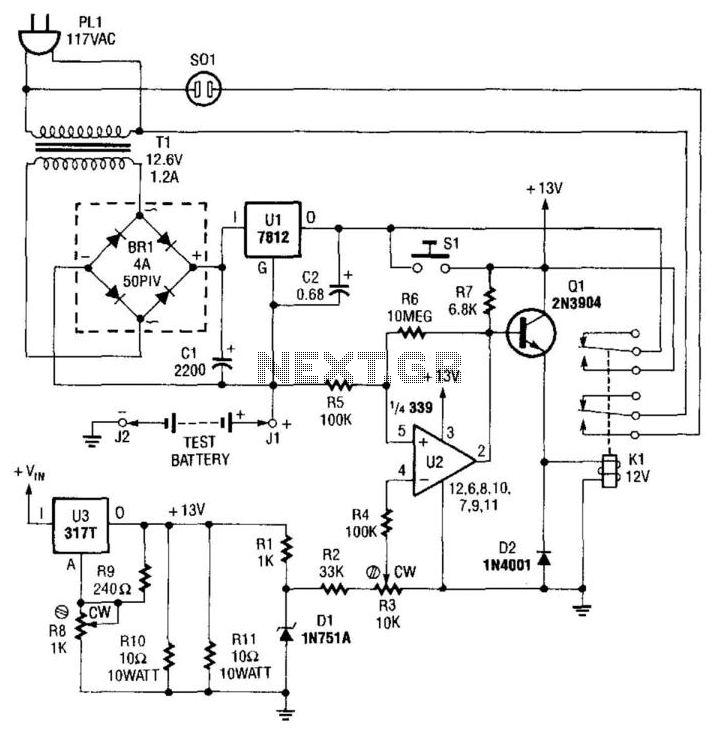
This NiCad battery tester discharges the test battery at a rate of 500 mA. When the endpoint of 1 V (determined by the setting of R3) is reached, pin 2 of U2 goes low, deactivating Q1 and disconnecting the test battery from the circuit. Power for U3 is supplied by the 12-V regulator in series with the battery being tested. A clock or timer can be connected to SI to indicate the time taken to discharge the battery under test.
The NiCad battery tester is designed to efficiently assess the state of charge of NiCad batteries by discharging them at a controlled rate of 500 mA. The circuit employs a resistor (R3) to set a voltage threshold, which is critical for determining when the battery has reached its endpoint voltage of 1 V. This threshold is monitored by operational amplifier U2, which plays a pivotal role in the circuit's functionality.
When the voltage across the test battery drops to 1 V, pin 2 of U2 transitions to a low state. This transition triggers the deactivation of transistor Q1, which is responsible for disconnecting the test battery from the circuit, thereby preventing further discharge and potential damage to the battery.
Power for the operational amplifier U3 is sourced from a 12-V voltage regulator that is connected in series with the battery being tested. This ensures that U3 receives a stable voltage supply, which is essential for accurate operation and monitoring of the battery condition.
Additionally, the circuit includes a provision for connecting a clock or timer to terminal SI. This feature allows for real-time monitoring of the discharge duration, providing valuable information about the battery's performance and health. The integration of a timer enhances the usability of the tester, making it a practical tool for evaluating NiCad battery capacity and determining when a battery may need recharging or replacement.
Overall, this NiCad battery tester circuit is a robust solution for battery evaluation, combining efficient discharge management with precise voltage monitoring and user-friendly features. This Nicad battery tester discharges the test battery at a rate of 500 mA. When the endpoint of 1 V (determined by set ting of R3) is resolved, pin 2 of U2 becomes low, deactivating Ql and disconnecting the test battery from the circuit. Power for U3 comes from the 12-V regulator in series with the battery being tested. A clock or timer can be plugged into SI to indicate the time it takes to discharge the battery under test.
🔗 External reference
The NiCad battery tester is designed to efficiently assess the state of charge of NiCad batteries by discharging them at a controlled rate of 500 mA. The circuit employs a resistor (R3) to set a voltage threshold, which is critical for determining when the battery has reached its endpoint voltage of 1 V. This threshold is monitored by operational amplifier U2, which plays a pivotal role in the circuit's functionality.
When the voltage across the test battery drops to 1 V, pin 2 of U2 transitions to a low state. This transition triggers the deactivation of transistor Q1, which is responsible for disconnecting the test battery from the circuit, thereby preventing further discharge and potential damage to the battery.
Power for the operational amplifier U3 is sourced from a 12-V voltage regulator that is connected in series with the battery being tested. This ensures that U3 receives a stable voltage supply, which is essential for accurate operation and monitoring of the battery condition.
Additionally, the circuit includes a provision for connecting a clock or timer to terminal SI. This feature allows for real-time monitoring of the discharge duration, providing valuable information about the battery's performance and health. The integration of a timer enhances the usability of the tester, making it a practical tool for evaluating NiCad battery capacity and determining when a battery may need recharging or replacement.
Overall, this NiCad battery tester circuit is a robust solution for battery evaluation, combining efficient discharge management with precise voltage monitoring and user-friendly features. This Nicad battery tester discharges the test battery at a rate of 500 mA. When the endpoint of 1 V (determined by set ting of R3) is resolved, pin 2 of U2 becomes low, deactivating Ql and disconnecting the test battery from the circuit. Power for U3 comes from the 12-V regulator in series with the battery being tested. A clock or timer can be plugged into SI to indicate the time it takes to discharge the battery under test.
🔗 External reference
